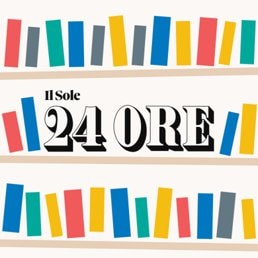“Agnus dei”: an archaic symbol that summarizes in itself the abysmal mystery of the Christian faith, as a representation of sacrifice as a figure of redemption. Some commentators suggest that, “due to the relationship of agnus with agni (fire), it is a sacrificial symbol of the periodic renewal of the world” (JE Cirlot, “Dictionary of Symbols”).
Depicted in some of the most valuable works of the European pictorial tradition (think of the Isenheim Altarpiece in Colmar, by Grünewald, the Polyptych of the Mystical Lamb of Ghent, by van Eyck, or “The Lamb of God” of Zurbarán), has disappeared with the advance of the “disenchantment of the world” (M. Weber) until it re-emerges – an evident sign of its roots in the collective unconscious – in the “Natural History” of the artist Damien Hirst.
Galleria Gagosian
Yes, because in the monumental halls of the Gagosian Gallery in London today a monographic itinerary is unveiled in a utopian museum of futuristic natural history, in which, among the variously disturbing creatures preserved in a solution of formaldehyde, the sheep stands out for its recursiveness (version “Adult” lamb). Sheep are “made” – literally – as many as three works in the exhibition: the iconic «I AM» (1995) and the provocative interaction between «Our Father Who Art in Heaven» (2005) and the irreverent triptych «In the Name of the Father “(2005).
Hirst grasps the Christian reference, appropriates it from an iconological point of view, recovers it by fragmenting it – a typical postmodern instance – and recomposing its sign, differentiating it from the original, to use it as a vehicle for shock. Hirst theorized and applied this technique in numerous places of his rich – and in many ways inconstant – artistic production, for example in the «New Religion» series. Without a doubt it is our belief that the artist should be able to play freely with his work, without taboos, provided that this dialectic finally knows how to build worlds – the artist first of all as oneironaut, demiurge and mythopoeia. However, when the shaped world sways in a hypnotic and thanatophilic stasis, in which life is absent, death eternal, everything is played around naked biology, the sense of a poetic – that of Hirst, in this case – deserves a problematization that don’t be uncritical.

The exhibition of dissected animal bodies preserved in chemical substances can certainly suggest numerous concepts of extreme speculative or socio-political importance – however contrasting, from meditation on the memento mori to the desire for immortality, passing through the reflection on carnivorous nutrition -, but it actually resolves, in the aesthetic experience, in an abandonment of any symbolic suggestion: art loses any pontifical ontology, of mediation between the visible and the invisible, reducing itself to its own signifier. At the most it is a metaphor for concepts, dominated by the terror of corruption and fragility, with the desire to isolate and protect portions of the “world of life”. And the lamb is the figure that best embodies this shift: bloody , traditionally symbolizes Christ victorious over death, in the prefiguration of John the Baptist (Jn 1, 29: “Behold the lamb of God, he who takes away the sin of the world!”) and in the disturbing triumph of the Apocalypse (Rev 8, 1; 13, 8; 14, 1), is instead presented by Hirst as the victim of his own exclusive natural death. Devoid of blood, kept in an aseptic, healthy, biochemical purified environment, his sacrifice does not appear in any way a sacrum facere, but only a useless torment, the ultimate landing on nothingness. No host, no banquet, no immolation. The metaphysics of light – for which the mystical lamb of the aforementioned Ghent Polyptych coincides with the emanation of the Principle, its declination in a sensible form – passes into the nihilistic theology of formaldehyde: the eternal present, deprived of the sacred, resolves itself into the presentism. This is a real ideology that postmodern art could notably overcome by approaching the intimate meaning of the Lamb, which reveals in its present suffering the promise of future fullness (the novum, according to Christian theology) on the basis of past tradition, in a temporal triangulation in which death is not the exhibition of the “spectacularization” (G. Debord) of the existing, but the fulfillment of the “being-for-death” (M. Heidegger). visionary are many of the pages that the recently deceased Roberto Calasso dedicated to you in his formidable posthumous essay “Under the eyes of the Lamb” (Adelphi 2022). Here the figure of the Lamb is distinguished from that of the Son of God, rising to an extra-denominational and super-temporal archetype of sacrifice, the “cosmic silence” that precedes the constitution of the world. In particular, “the ransom made by Jesus is unique and last, but it has been preceded by others, partial and provisional, since the beginning of time, operated by the blood of an animal: the divine lamb, agnus Dei. Each time, men were granted, for some time, a sense of liberation, without impediments, but soon they returned to the condition of hostages awaiting ransom ». Will contemporary art return to create in the sign of the Lamb, in front of his gaze charged with both suffering and redemption?
